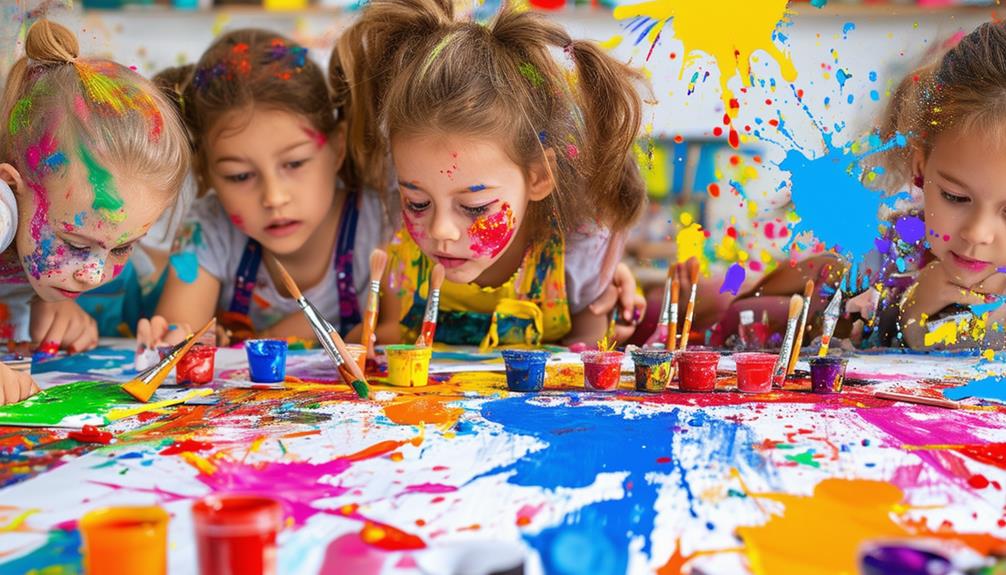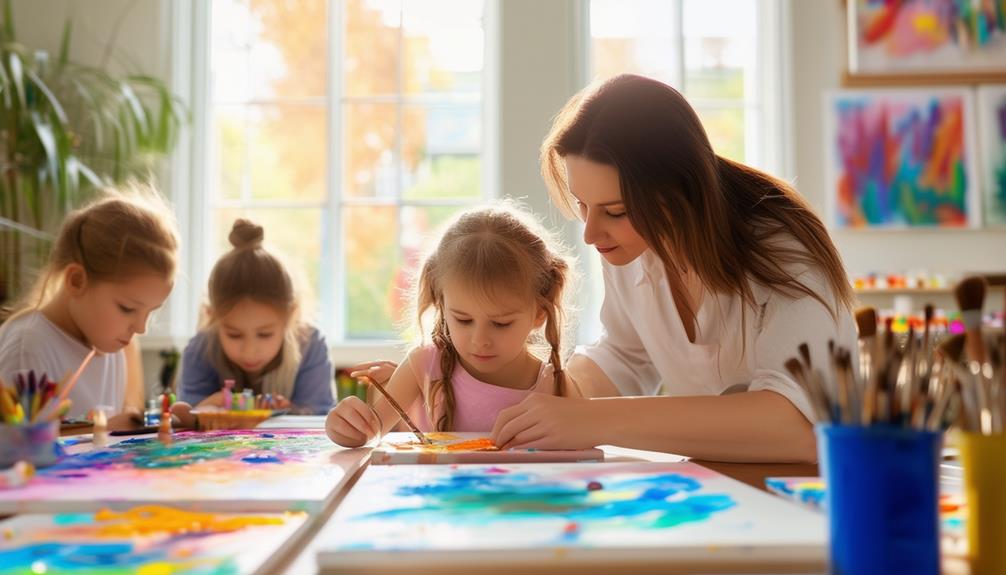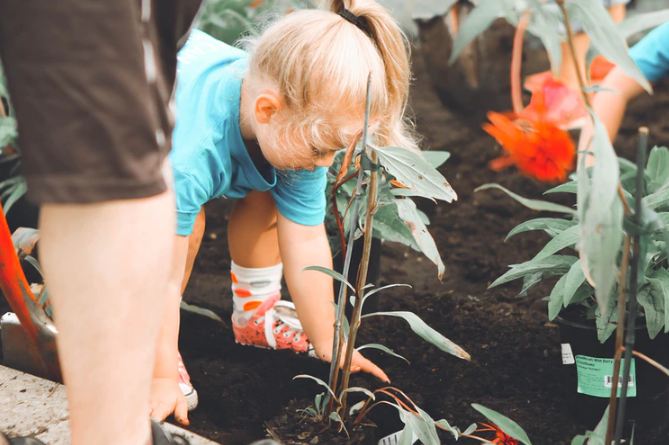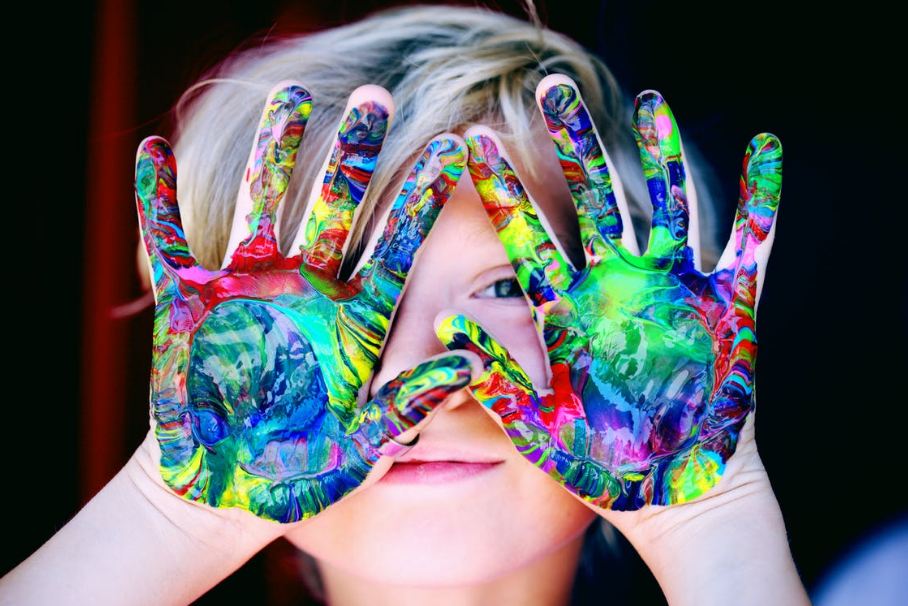Painting and Emotional Expression: Helping Kids Express Themselves

When considering how children can express their emotions, painting stands out as a particularly effective method. It allows kids to convey feelings they might find difficult to articulate verbally. By giving them the freedom to use colors and shapes, they can externalize their inner experiences, providing a cathartic release. This activity not only aids in emotional expression but also boosts self-esteem and confidence, making it a valuable tool for emotional development. Curious about how art functions as a language for children and its therapeutic benefits? Let's explore this further.
Psychological Benefits of Art
Engaging in art offers profound psychological benefits, particularly for children navigating complex emotions. Art therapy provides a powerful outlet for emotional expression, enabling children to convey feelings they might struggle to articulate. Introducing art activities creates a safe space for creative expression, assisting children in exploring their inner worlds and expressing thoughts visually.
Artistic and emotional development are closely linked. Through creative expression, children can investigate their emotions and make sense of their experiences, promoting emotional growth and developing fundamental skills like focus and concentration. Immersing in art teaches perseverance and attention to detail, essential for overall development.
Art therapy not only aids in emotional expression but also empowers children. Providing them with the tools to create nurtures self-esteem and confidence. When children see their artwork, they experience a sense of achievement that words cannot achieve. This empowerment fosters resilience and self-assurance, crucial for facing challenges. In essence, art promotes balanced, healthy growth by aiding both artistic and emotional development.
Emotional Expression and Catharsis
Art serves as a powerful therapeutic tool for children to process and express their emotions. Through creative activities like painting and drawing, children can release emotions that might be difficult to articulate verbally. This form of expression allows them to transform their feelings into tangible visual narratives, aiding in emotional release and fostering creative healing.
When children face emotional challenges, art provides a safe space for them to explore and communicate their feelings. Engaging in artistic activities enables them to confront and understand their emotions in a non-threatening manner. This process is crucial, as it helps children express feelings they might not yet have the words for, making their emotional communication more impactful.
Additionally, art offers therapists valuable insights into children's emotional states. By analyzing their artwork, therapists can gain a deeper understanding of the children's experiences and provide more targeted and effective interventions. Thus, art is not merely a pastime but a vital tool for helping children navigate their inner worlds, offering both emotional release and a means for effective emotional expression.
Building Self-Esteem and Confidence

Painting not only offers a medium for emotional expression but also significantly boosts children's self-esteem and confidence. Through art classes, children can express feelings and emotions that words sometimes can't capture. Completing a painting or art project helps with emotional regulation and enhances self-esteem.
As children engage in artistic activities, they begin to appreciate their own abilities. Creating something unique gives them a sense of accomplishment and pride, uplifting their self-worth and boosting their confidence in other areas of life.
Art classes provide a supportive environment for children to experiment and take risks without fear of judgment. This nurturing atmosphere helps them build confidence as their skills improve. Celebrating their artistic achievements helps them recognize their potential and strengths.
The empowerment from artistic expression extends beyond creating art. It fosters a positive self-image and helps children better navigate their emotions. Ultimately, painting becomes a powerful tool for building self-esteem and confidence in young minds.
Art as Children's Language
Children often use art as a powerful language to convey emotions and thoughts they can't easily articulate with words. Through artistic expression, they can share their feelings and experiences in a way that feels safe and natural. Art becomes a tool for emotional exploration, allowing children to communicate their inner world vividly and honestly.
By engaging in artistic activities, children gain an outlet to express complex feelings. This process not only helps them understand their emotions but also improves their social skills. When they share their creations, they invite others to see and connect with their emotional landscape.
- Express feelings: Art allows children to externalize their emotions, making it easier for them to manage and comprehend.
- Improve social skills: Creating and sharing art fosters communication and empathy, helping children build connections.
- Explore inner world: Art provides a window into children's thoughts, offering insights into their emotional experiences.
- Empowering tool: Art empowers children to take control of their emotional expression, giving them a sense of agency.
Helping children use art as a language can greatly impact their emotional development. This tool for emotional expression bridges the gap between their inner experiences and the external world.
Art-Based Techniques in Therapy

Art serves as a powerful language for children, enabling them to navigate their emotional landscapes. Art therapists use specific methods tailored to each child's needs, guiding them in selecting the right medium—be it paint, clay, or pencils. This approach is especially beneficial for children who struggle with verbal communication, as it allows for non-verbal expression of thoughts and feelings.
Creating a secure and supportive environment is crucial for effective therapy. Children need to feel safe to explore their emotions through various materials. Both guided and free exploration activities offer unique benefits. Guided activities provide structure and direction, while free exploration allows for spontaneous emotional expression.
Feedback and reflection are essential components of the therapeutic process. Art therapists provide constructive feedback and engage children in reflection, helping them understand their emotional expressions and fostering growth and self-confidence. By interpreting the underlying messages in a child's artwork, therapists gain insights into their emotional state, enabling more tailored support. These art-based methods are vital in helping children express and understand their emotions effectively.




